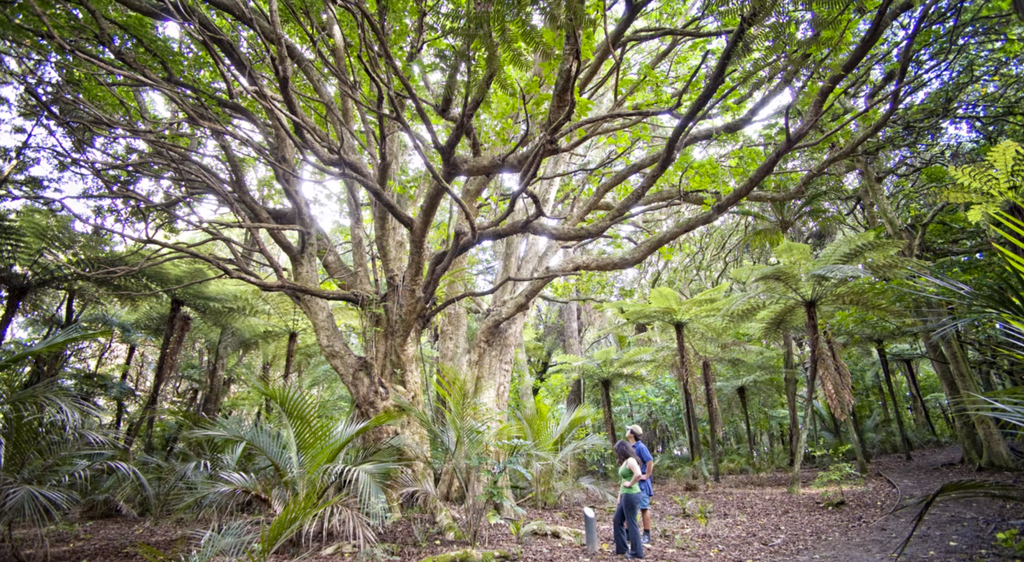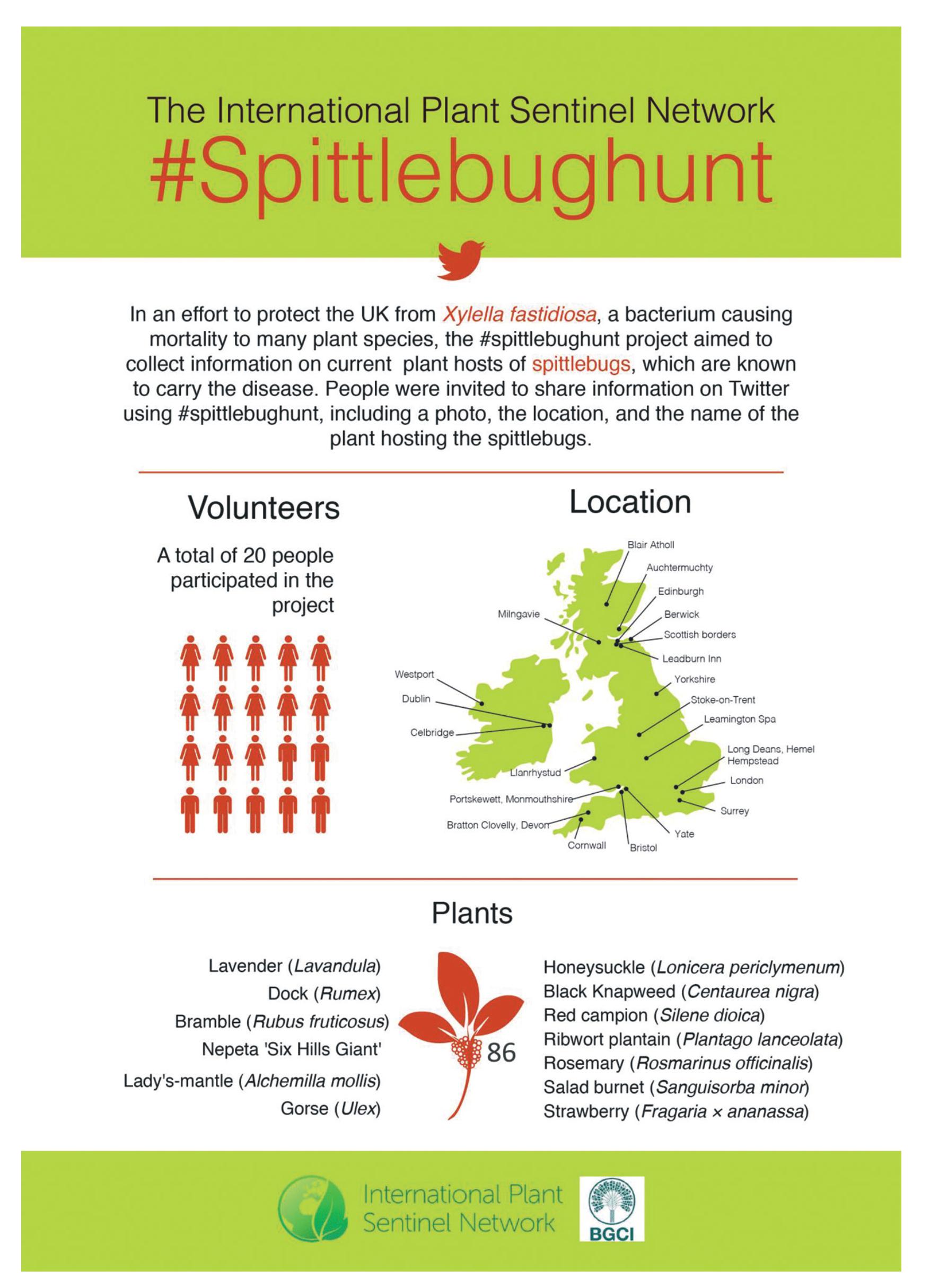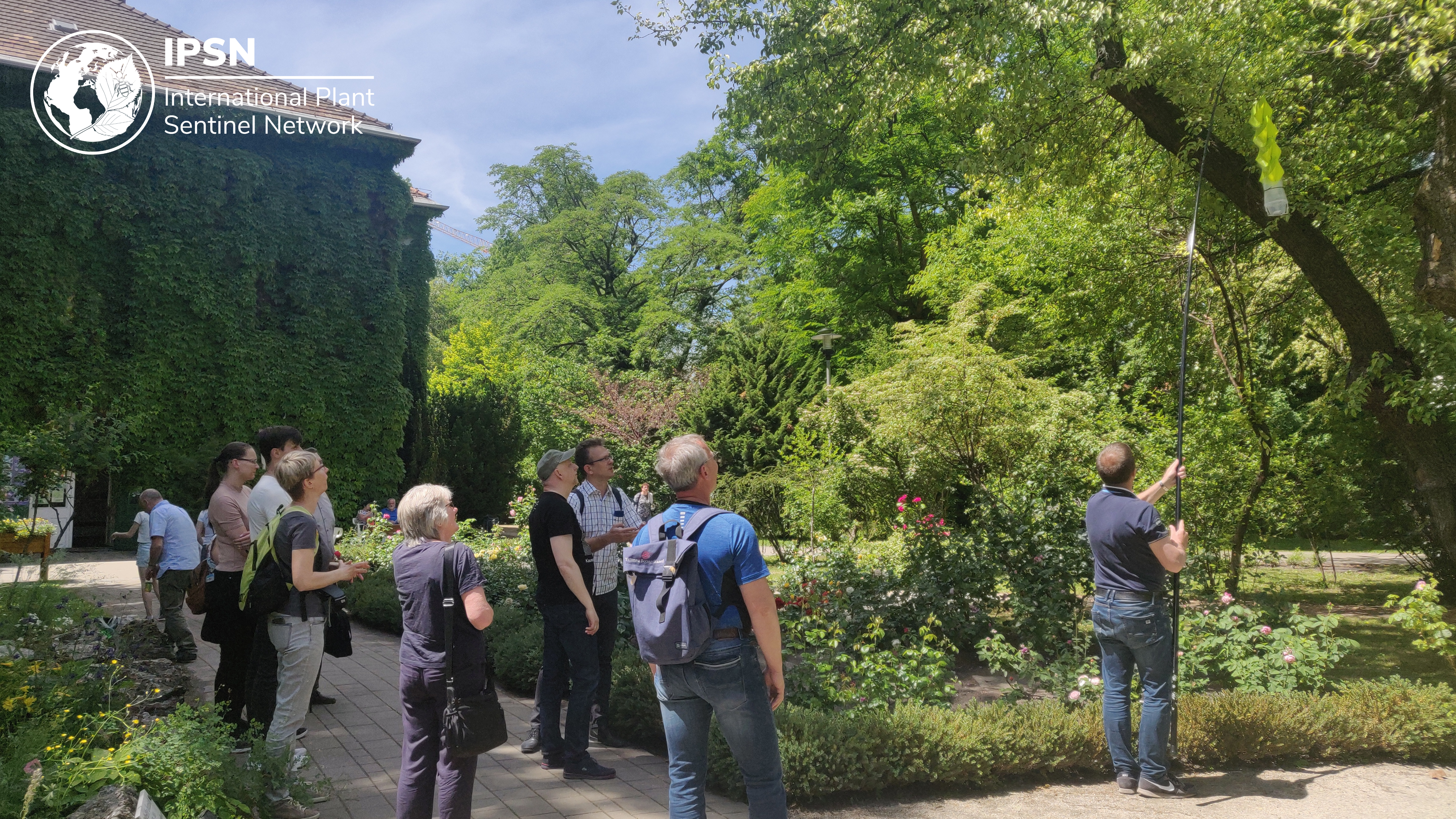IPSN History

-
Status of project
Ongoing -
Region
Global -
Workstream
Saving Plants -
Topic
Plant Conservation -
Type
The International Plant Sentinel Network (IPSN) traces its roots back to 2013 when it was founded by EUPHRESCO to address the growing need for coordinated plant health surveillance in response to increasing globalization and climate change.
Over the years, we have evolved into a leading force in plant health monitoring and advocacy, supported by funding from organizations such as Defra and the Future Proofing Plant Health Fund, the European Union and the United States Forest Service (USFS).
Our journey has been marked by a variety of milestones including the expansion of our global network, the development of innovative surveillance methodologies, and the publication and dissemination of diverse information and training resources. If you want to read more about this you can take a look at our “IPSN at 10” blog.
OUR HISTORY
The Beginnings (2013-2016)
The International Plant Sentinel Network (IPSN) emerged in 2013 as a visionary initiative uniting botanic gardens, arboreta, and plant health scientists worldwide. Initially supported by funding from the European Commission’s FP7 programme, the IPSN embarked on a journey to bolster global plant health security. The project, led by the UK’s Fera and coordinated by Botanic Gardens Conservation International (BGCI), aimed to enhance monitoring of plants growing outside their natural regions for damage by organisms in their new environment, known as ‘sentinel plants’. This phase focused on building an international network of experts from diverse backgrounds, including scientists, government officials, and botanical garden staff.
During this initial period significant progress was made in establishing IPSN’s infrastructure and resources with key achievements including:
1. The development of the Plant Health Checker recording form.
2. The creation of the first educational materials
3. The initiation of targeted surveys to assess plant health threats.
Watch this video to learn more about the IPSN background:
Continued network development (2016-2020)
Building upon the foundation laid during its initial phase, the IPSN continued to evolve and expand its activities from 2016 to 2020. The second phase of the project, known as IPSN II, focused on enhancing early detection of regulated and emerging pests, supporting Pest Risk Analysis (PRA), and establishing a self-sustainable network of botanical gardens and arboreta. The primary goals during this phase were to:
1. Strengthen national sentinel networks already established in Australia, South Africa, Belgium and UK.
2. Continue capacity building efforts through webinars and conference sessions to enhance participation in pest and disease research activities.
3. Facilitation of knowledge exchange and communication among members, promoting skill development.
4. Resource Development through the provision of guidance and tools to support plant health surveillance efforts, aiding in early detection and management of pests and diseases
5. Promotion of biosecurity practices engaging with partners in outreach activities to educate stakeholders on the importance of biosecurity and the role of plant sentinel networks in safeguarding plant health
Key achievements included the expansion of the network to 66 institutions from 20 countries, the creation of the directory of expertise and the launch of the spittlebug surveillance campaign.

Growth and expansion (2020-Present)
Building upon its previous achievements, in recent years, the IPSN has continued its efforts to expand its activities and build capacity among botanical gardens and arboreta worldwide. With renewed support from the Future Proofing Plant Health Fund, (under DEFRA auspices) the USFS and Horizon Europe the network’s work is currently focusing on:
1. Strengthening and expanding the network: by building capacity through information resource creation, workshop facilitation and regular communications and meetings to facilitate knowledge exchange.
2. Development of data capture tools: Creating a mobile app for monitoring plant health issues. Ensuring systematic data recording and sharing for research findings.
3. Emerald Ash Borer Monitoring in Eastern Europe: Implementing a monitoring and trapping program to help detect and track Emerald Ash Borer as it moves from its current range in Eastern Europe. This includes providing resources and training for pest surveillance to partner botanic gardens/arboreta.
4. General and Targeted Surveillance: Identifying pests and diseases on priority host species as well as monitoring for key organisms of concern.
5. Increasing understanding of the role of collections and promotion of key biosecurity/pest and disease information: Through the establishment of the IPSN Small Grants to support research on the use of botanic garden/arboreta collections for plant health support.
6. Establishing new initiatives to support plant health monitoring: collaborating in new initiatives such as the UK Garden Sentinel Network (UKGSN). Learn more about the UKGSN here.

IPSN future
Looking ahead, the IPSN remains steadfast in its commitment to advancing global plant health security.
Plans are underway to further expand the network, fostering international collaboration and knowledge exchange worldwide. The IPSN will continue to gather essential data to support ongoing projects, including the surveillance of priority pests and pathogens. Additionally, efforts will be intensified to explore reciprocal survey programmes and develop further training and information resources for capacity building in pest and disease surveillance as well as biosecurity best practices.